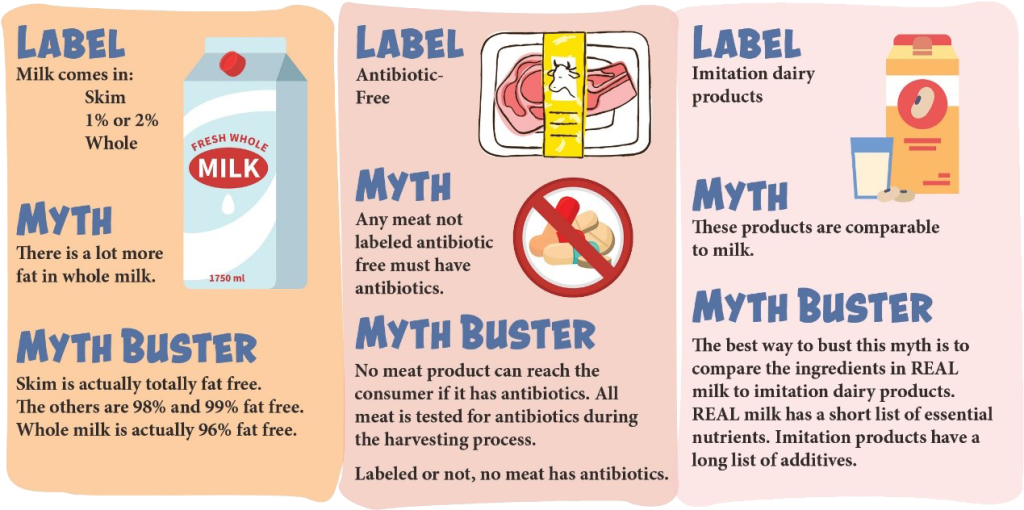Our food labels provide great nutrition information in a uniform box that is literally black and white. But, as clear as it may seem, some labels are clear as mud.
They are often misleading and confusing and leave the consumer with a ‘myth’ about food. What isn’t said, or how it’s stated, often leads to false implications. Maybe we need to decode it for consumers.
Let’s take a look at three common myths.

Studies show that 76% of adults read food labels. Around 60% find them confusing.* There are efforts to change food labeling and Farm Bureau has lobbied for those changes. Until the changes are made though, what can we do?
For those of us with boots ‘on the ground,’ we can share the truth about the good food we produce. Think about ways you can share these messages. How can you take these facts with you to engage people? Maybe you can work with a local grocery store on a promotion. Can you bring small informational cards with you to put next to your church potluck meal? Maybe you are confident enough to ask someone in the grocery store if they have a question about the meat or milk they are buying.
The most important thing to consider is going to the customer. Talk their language. Be where they are consuming or buying food.
Get creative in how you can engage customers. Without conversations and active advocating we can’t make a difference.
Together, we can change one shopper at a time and help them understand the truth about food. I challenge you to step up to the plate and give it a try.
If you are looking for a starting point check out the WFBF Promotion and Education Playbook. Throughout the Playbook, you will find activities and events for all ages, timeframes and budgets. You can find it by visiting wfbf.com/programs/promotion-and-education/playbook.
* Source: ucsusa.org/resources/transparency-food-labeling
